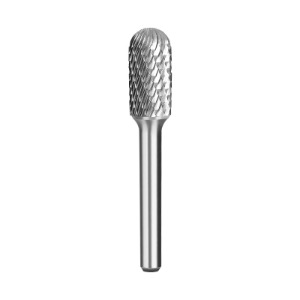Importance of Shank Design in Rotary Burs
The shank of a carbide rotary bur plays a crucial role in determining the overall stability, control, and precision during cutting operations. While much attention is often given to the cutting head, the connection between the bur and the tool holder affects vibration, heat generation, and operator comfort. Carbide Rotary Burs are designed with various shank configurations to optimize these performance aspects, ensuring efficiency and durability across different applications.

Types of Shank Designs and Their Features
- Straight Shank: The common shank design provides a uniform diameter along its length. Straight shanks are easy to manufacture and widely compatible with standard collets. They offer a stable grip when properly inserted, but may be more prone to minor vibration at high speeds.
- Tapered Shank: Gradually narrows toward the cutting head, providing a self-centering effect in the tool holder. Tapered shanks enhance stability by reducing lateral movement and improving concentricity, which is especially beneficial for precision work.
- Knurled or Textured Shank: Surface textures or knurling increase friction between the shank and the collet, preventing slippage. This design is advantageous during high-torque operations, ensuring the bur remains securely in place without affecting alignment.
- Extended or Long Shank: Longer shanks are used for reaching deep cavities or intricate areas. While they improve accessibility, they may reduce rigidity, requiring careful balance between length and diameter to maintain stability.
Effects on Vibration and Cutting Accuracy
Vibration Reduction: A well-designed shank reduces vibrations transmitted from the tool holder to the cutting head. Reduced vibration improves operator control and prevents chatter marks on the workpiece surface.
- Precision Maintenance: Stable shanks ensure that the cutting head maintains its intended trajectory, enhancing dimensional accuracy and surface finish. Inconsistent or poorly designed shanks can cause deviation in cuts and increased wear on the carbide head.
- Heat Management: Excessive vibration generates heat, which may affect both the carbide tip and the workpiece material. Optimized shank designs help dissipate energy efficiently, reducing thermal stress during prolonged operations.
Compatibility with Tool Holders and Machines
- Collet Fit: Shank diameter and shape must match the collet or chuck for a suitable gripping force. Even minor mismatches can reduce stability and increase rotational wobble.
- Machine Speed Adaptation: Different shank designs perform better at varying RPMs. Straight shanks may be ideal for moderate speeds, while tapered or knurled shanks are better suited for high-speed applications due to enhanced concentricity and grip.
- Torque Transmission: Shank design influences the efficiency of torque transfer from the machine to the cutting head. Knurled and tapered designs reduce slippage under high torque, improving cutting consistency and tool lifespan.
Material Considerations and Shank Durability
- Carbide Tip Integration: The connection between the shank and carbide head must withstand cutting forces. Strong adhesion or welding techniques are crucial for preventing detachment during high-load operations.
- Shank Material Quality: Stainless steel or hardened tool steel shanks resist bending and fatigue, preserving stability even after repeated use. Low-quality shanks may deform, compromising both precision and safety.
- Surface Coating: Some shanks feature coatings that reduce friction in the collet, improving rotation smoothness and reducing heat buildup, which contributes to consistent cutting performance.
Optimizing Shank Design for Stable Performance
Shank design is a critical factor influencing the stability and efficiency of Carbide Rotary Burs. Straight, tapered, knurled, and extended shanks each offer unique advantages depending on the application, speed, and accessibility requirements. Proper shank selection ensures vibration reduction, precision maintenance, and effective torque transmission, while also protecting both the bur and the workpiece from excessive heat and wear. By understanding the interplay between shank geometry, material quality, and machine compatibility, manufacturers and operators can optimize performance, extend tool life, and achieve consistent, high-quality results in diverse industrial and precision cutting applications.
